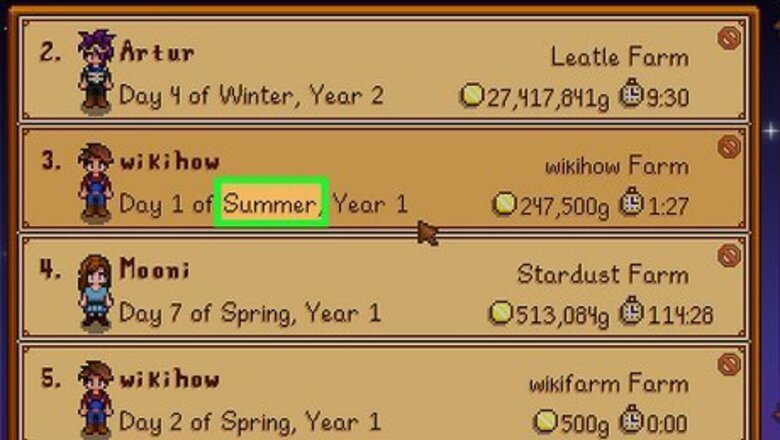
views
- During your first year, aim to build a Chicken Coop, reach level 90 in the Mines, unlock the Greenhouse and Bus Stop, and finish the Community Center.
- Start small by foraging and fishing as much as possible, which gets you money, Community Center bundle items, and skill experience.
- Focus on growing multi-harvest crops that can also be used to make artisan goods, which are worth more than the crops themselves.
Plan Your First Year
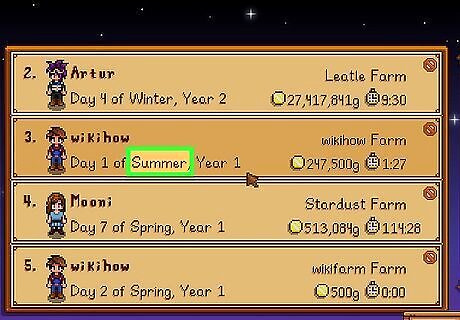
Set yourself up for success by planning your first year. While Stardew Valley is an expansive game that lets you do almost anything you want, if you want to make a lot of money quickly you should plan out your first year to maximize the amount of progress you can make, as the items that help you earn more money are available later in the game. Spring: Your goals for Spring are to build a Chicken Coop (to get access to eggs so you can make Mayonnaise), get to level 90 in the Mines, and plant strawberries after the Egg Festival. You'll only get two Strawberry harvests, but if you use Speed-Gro Fertilizer you can increase this to three harvests. Summer: In the Summer you should aim to grow multi-harvest crops (like blueberries and hops) and to craft more sprinklers, as sprinklers greatly help cut down on your watering time every morning. Fall: By Fall you should be able to unlock the Greenhouse (complete the Pantry Bundle in the Community Center) and the Bus Stop (complete the Vault Bundles in the Community Center). You should also make tappers (to get resin from oak trees, an important ingredient for cask making) and iridium sprinklers. Winter: Focus on finishing the Community Center (if you didn't go the JojaMart route) and work on mining in the Skull Cavern.
Collect Forageables

Collect as many forageables as you can. When you first start out, you won't be able to generate much passive income at first, so you should sell almost anything you collect. Try to collect as many forageables as possible to sell, but make sure you save at least one of each for the Community Center. Don't forget to check the Beach for items that washed up on the beach. If you find a forageable that is better than normal quality (no stars), sell those. These items are worth more money, and most of the Community Center bundles don't require a certain quality of item.
Grow Mixed Seeds
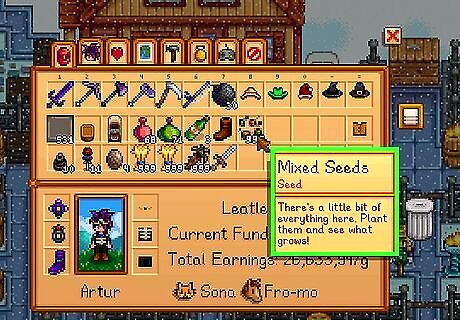
Plant and grow the mixed seeds you find. When clearing out fiber on your farm, you'll likely find a lot of mixed seeds. These seeds can be planted and will grow into a variety of seasonal crops that can then be sold—or if you get lucky, you might get a Community Center bundle item. Though you won't make a lot of money off of growing Mixed Seeds, it's pure profit since the seeds are free.
Fulfill Help Wanted Ads

Check the Help Wanted board outside Pierre's shop. Villagers will post various ads throughout the year offering to pay gold for various items. While you should do as many want ads as you can, you should focus on growing the following crops for Help Wanted ads that pop up in each season: Spring: Grow cauliflower, which can get you up to 525 gold per request. Summer: Grow melons. Villagers might put up an ad for a melon for a 750 gold reward, and Demetrius will ask by mail to buy one for 550 gold. Fall: Grow pumpkins, as these are the highest-paid requests during the season. A pumpkin request can net you up to 960 gold.
Go Fishing
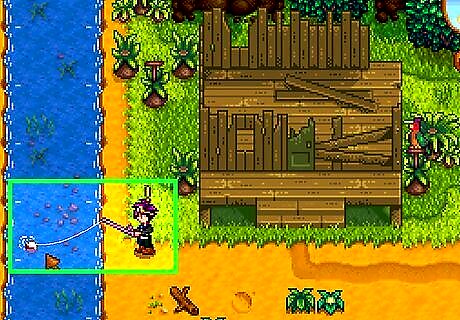
Fish as much as possible. Fishing is one of the best ways to earn money early in the game, and many Community Center bundles require fish. While the fishing minigame can be a little bit difficult at first, the more Fishing skill you get, the easier it becomes.
Check Garbage Cans
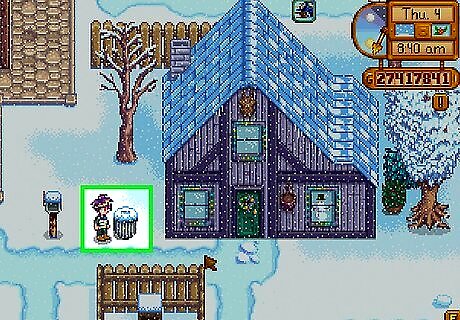
Check garbage cans. While you usually find junk in trash cans, sometimes you find useful things, including items you can use to fill out Community Center bundles or sell for extra money. Just make sure there are no other villagers within a 15x15 tile square (with your character at the center) as they will get offended and lose 25 friendship points with you. The one exception is Linus, who will gain 5 friendship points if he sees you digging through the garbage.
Grow the Best Crops
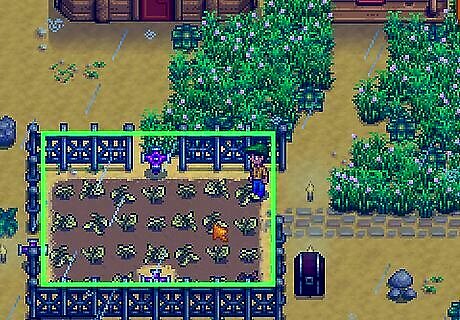
Select the best crops to grow to maximize your profit. Crops that grow all season are a better choice, as it saves you time from having to replant seeds. Note that while you're trying to finish the Community Center, make sure to grow the crops that are required for your bundles as well. You should also grow various crops to fulfil Help Wanted ads. Spring: Strawberries (8 days grow time, then 4 days to regrow), cauliflower (12 days grow time), and potatoes (6 days grow time). Strawberry seeds can only be purchased at the Egg Festival, but you can buy extra seeds and hold on to them until next year or you can put a Strawberry in a seed maker to get more seeds. Cauliflower can turn into a giant crop, and there's a chance you'll get an extra potato for each plant you harvest. Summer: Blueberries (13 days grow time, then 4 days to regrow), melon (12 days grow time), hops (11 days grow time, then one day to regrow), and starfruit (13 days grow time). Blueberries and hops are good resources for making artisan goods. Melons can turn into a giant crop, and starfruit are very valuable (though a little tricky to get seeds for). Fall: Cranberries (7 days grow time, then 5 days to regrow), pumpkin (13 days grow time). Like many other multi-harvest crops, cranberries drop multiple items when harvested. Pumpkins can turn into a giant crop.
Make Artisan Goods
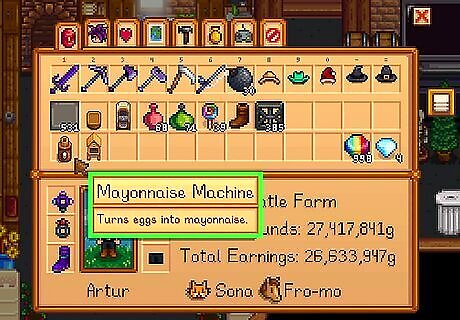
Use your crops to make artisan goods. Once you have artisan equipment unlocked and you have the materials to make them, you should shift focus from selling crops to using them to make artisan goods. Artisan goods sell for more money than crops, so while they take a bit longer to make it's worth the investment. As you level up your Farming skill you gain new artisan equipment recipes. Mayonnaise Machine - Unlocks at level 2 Farming: Turns eggs into mayonnaise Bee House - Unlocks at level 3 Farming: Generates honey. Plant flowers around the Bee House to make flower honey Preserves Jar - Unlocks at level 4 Farming: Turns vegetables into pickles and fruit into jam Cheese Press - Unlocks at level 6 Farming: Turns milk into cheese Loom - Unlocks at level 7 Farming: Turn raw wool into fine cloth Keg - Unlocks at level 8 Farming: Turns various items into beverages (wheat into beer, coffee beans into coffee, tea leaves into green tea, vegetables into juice, honey into mead, hops into pale ale, and fruit into wine) Oil Maker - Unlocks at level 8 Farming: Turns truffles, corn, and sunflower seeds into oil Cask - Unlocks with the Farmhouse cellar upgrade: When used in the cellar, ages products (such as wine or cheese) to increase their value
Select the Right Professions
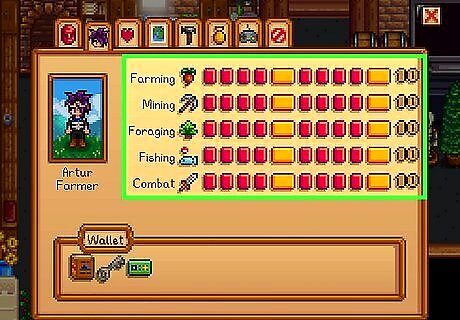
Selecting the right skill professions can drastically increase your profits. While you're not locked in to any profession choice, it's better to make the best choice first to save yourself time and money. Farming: Select Tiller at level 5 and Artisan at level 10. Unless you're focusing heavily on animals, Tiller is the best option for level 5. And the 40% profit increase on artisan goods from Artisan is a huge boost. Mining: Select Miner at level 5 and Blacksmith at level 10. The caveat is that if you select Blacksmith, you must sell iridium bars once you don't need them anymore. If you don't want to sell iridium bars, you should select Prospector. If you want to use Crystalariums, you should select Geologist and then Gemologist to increase your gem profits. Foraging: Select Gatherer at level 5 and Botanist at level 10. While you may not be foraging items much near the end of the game, finding high-quality forageables is preferred to the other occupation choices for the Foraging skill. Fishing: Select Fisher at level 5 and Angler at level 10. These two choices increase the amount your fish sell for, which is a huge boost as some fish can sell for quite a bit of money (especially if you get high-quality fish). Combat: Select Fighter at level 5 and Brute at level 10. These professions deal more damage to enemies, which helps you defeat them faster so you can get back to mining (which is what earns you money in the Mines).
Capitalize on Chickens
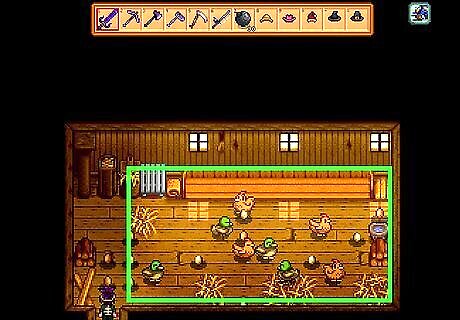
During your first Spring you should build a Chicken Coop. Chicken Coops are easy to build as they don't cost much gold and require few materials. Chickens are also cheap at only 800 gold apiece, and lay eggs that can be sold for anywhere between 50 gold and 190 gold. Once you unlock the Mayonnaise Machine, you can increase your profits to up to 380 gold per tub of Mayo.
Brew Pale Ale
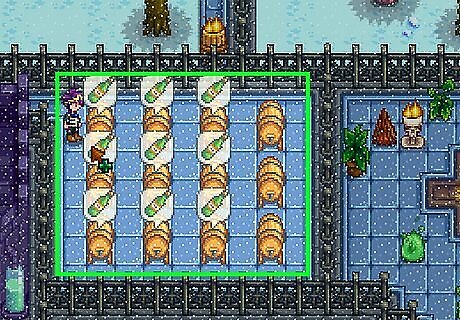
Work towards unlocking the Keg. Kegs are unlocked at Farming level 8 and drastically increase the value of the items put in it. While you work towards getting the Keg, grow as many Hops as you can in the Summer. Once you can make Kegs, make as many as you can and start brewing Pale Ale, which offers the highest return on investment of any item in the game. Hops Starters are 60 gold each. They grow in 11 days and can be harvested every day after, which means you can harvest 17 Hops from one starter. As Pale Ale sells for 300 a piece, you can get 5,040 gold in profit from one Hops plant (more if you use fertilizer or have the Artisan profession).
Build a Fish Pond
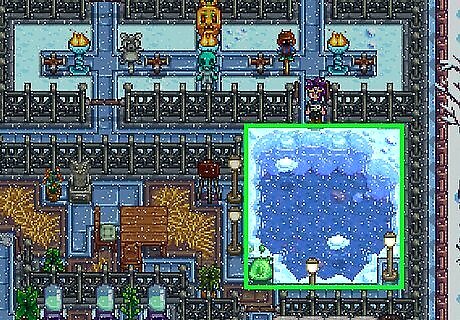
Build a fish pond to generate passive income. Placing a fish in a Fish Pond makes caviar. The best fish to use in the Fish Pond is a sturgeon; once you harvest the roe from the sturgeon, age it in a preserves jar. This will increase the roe's value.
Put out Crab Pots
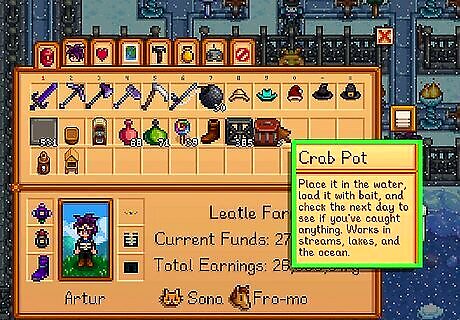
Make some crab pots and put them in the water for more passive income. Sell everything you get in your crab pots, except trash. Trash can be recycled in a Recycling Machine to get back refined materials. If you haven't finished your Community Center yet, you can also get a number of items for the Crab Pot bundle.
Tap Trees
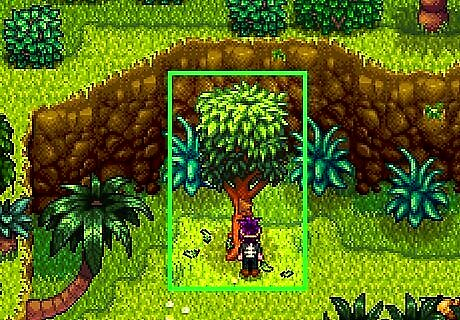
Collect tree materials with tappers to sell or craft with. Tappers can be used to collect Maple Syrup, Oak Resin, and Pine Tar. Maple Syrup is worth the most but takes the longest to collect. However, you will need Oak Resin to make Kegs and Pine Tar to make looms, so you should collect all three and sell any excess that you don't need.
Sell Gems
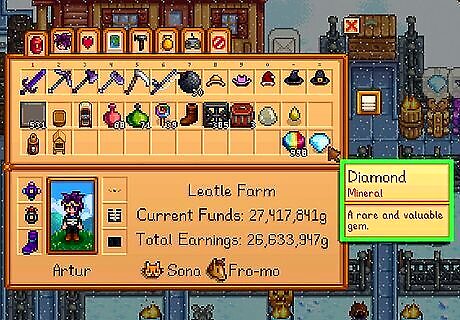
Hit the mines and get some gems to sell. Gems are just as valuable in Stardew Valley as they are in real life. Normal-quality Diamonds sell for 750 gold, with higher-quality ones selling for even more. And while you can make a profit off of selling the random gems you find while mining, the best way to increase your profit exponentially is to use a Crystalarium. Crystalariums replicate any gem or mineral placed inside of it, so if you have a whole host of Crystalariums, you can replicate Diamonds for a huge profit. Crystalariums aren't unlocked until you've purchased the 25,000 gold bundle from the Community Center, so it may take some time to get one.
Use the Greenhouse

Once you unlock the Greenhouse, use it often. The Greenhouse allows you to grow any crop at any time, including winter. This allows you to continue to grow crops for your artisan goods to continue making profit in the winter. If you're following the guide in the first section of this article, you should complete the Greenhouse during your first Fall, so you have the Greenhouse ready for winter. You can also grow crops year-round on Ginger Island, if you have it unlocked.


















Comments
0 comment